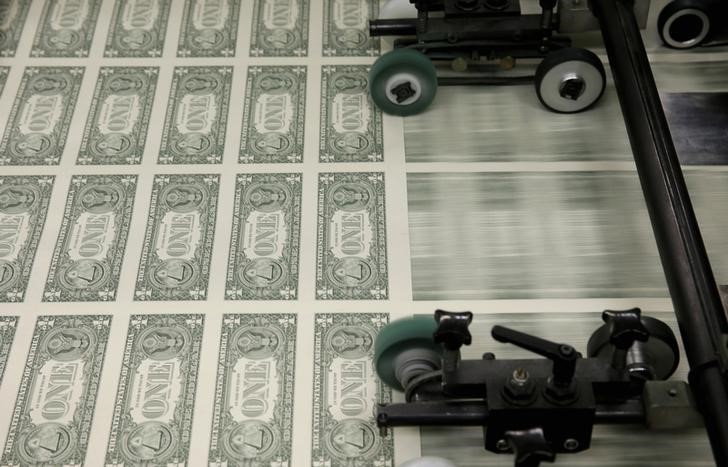Investing.com - The dollar remained broadly lower on Tuesday, after the release of mixed U.S. housing sector data and as investors prepared for the Federal Reserve's policy meeting set to begin later in the day.
The U.S. Commerce Department reported on Tuesday that the number of housing starts unexpectedly fell in August, while building permits unexpectedly jumped.
Separate reports showed that U.S. import prices posted their biggest gain in seven months in August, while the current account deficit widened more than expected in the second quarter.
Meanwhile, the Fed was widely expected to leave interest rates unchanged at the conclusion of its two-day policy meeting on Thursday. However the U.S. central bank could give indications on when it plans to begin unwinding its balance sheet, as well as on any future interest rate decisions.
USD/JPY slipped 0.11% to 111.44, while with USD/CHF edged up 0.12% to trade at 0.9629.
Concerns over tensions between the U.S. and North Korea remained subdued during the session, although they were susceptible to pick up at any moment.
U.S. President Donald Trump was set to address the United Nations General Assembly for the first time on Tuesday and Pyongyang was widely expected to be on the agenda.
The White House said in a statement that President Trump plans to call for international action to confront North Korea and Iran, which he will portray as twin threats to global security.
Elsewhere, EUR/USD gained 0.24% to 1.1983, while GBP/USD rose 0.26% to 1.3533, not far from the previous session's 15-month peak of 1.3619.
The pound weakened on Monday following comments by Bank of England Governor Mark Carney saying that any pending interest rate rises over the coming months would be limited and gradual.
In the euro zone, the ZEW Centre for Economic Research earlier said its index of German economic sentiment rose to 17.0 this month from August’s reading of 10.0.
The Australian and New Zealand dollars were stronger, with AUD/USD up 0.38% at 0.7990 and with NZD/USD advancing 0.40% to 0.7287.
Also Tuesday, the minutes of the Reserve Bank of Australia's September meeting showed that policymakers remained favorable to low interest rates, saying that they allowed the economy to continue to strengthen.
Meanwhile, USD/CAD slipped 0.15% to 1.2279.
Statistics Canada reported on Tuesday that manufacturing sales dropped 2.6% in July, compared to expectations for a decline of 1.6%.
The U.S. dollar index, which measures the greenback’s strength against a trade-weighted basket of six major currencies, was down 0.23% at 91.59 by 08:40 a.m. ET (12:40 GMT), just off a one-week low of 91.57 hit overnight.
